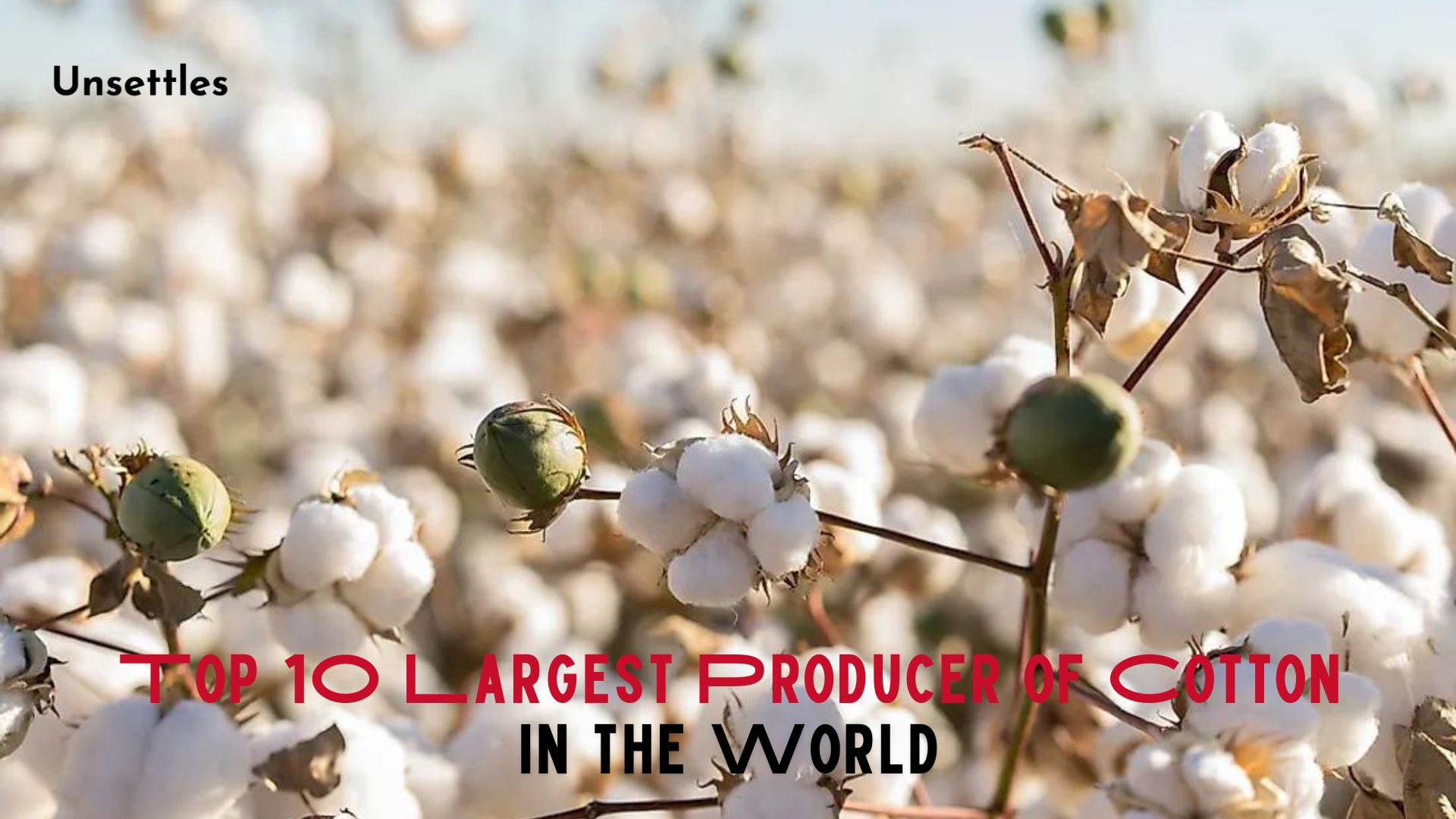Cotton, often referred to as “white gold,” plays a crucial role in the global textile industry. As of 2024, the cotton industry continues to flourish, with numerous countries producing top-quality cotton in massive quantities. The demand for cotton has only grown, and as a result, countries are expanding their cotton farming and export capabilities. Let’s take a look at the top 10 cotton-producing nations in 2024.
1. India
6.2 Million Tons
India tops the list, producing a staggering 6.2 million tons of cotton in 2024. With its long history in cotton cultivation and diverse climate, India has become the global leader in cotton production. Indian farmers have embraced modern agricultural techniques to meet the demand of both domestic textile industries and international markets. Cotton has been a staple in Indian agriculture for centuries, and the country’s vast knowledge and experience in this sector ensure it remains at the forefront of global cotton production.
2. China
6.2 Million Tons
China matches India’s production at 6.2 million tons. As one of the largest players in both agriculture and the textile industry, China combines traditional farming practices with cutting-edge technology. The country’s vast agricultural land, coupled with its focus on innovation and sustainability, makes China a major force in cotton production. Chinese farmers are known for their use of precision farming, advanced machinery, and data-driven decisions to optimize yields.
3. United States
3.6 Million Tons
The United States follows closely behind with 3.6 million tons of cotton produced in 2024. U.S. farmers are renowned for their use of advanced technology and precision farming techniques to manage large cotton fields efficiently. Despite fluctuations in the market, the U.S. remains a steady and reliable cotton producer, contributing significantly to the global cotton supply. The focus on sustainability and innovation sets American cotton production apart, ensuring high-quality output.
4. Pakistan
2.4 Million Tons
Pakistan ranks fourth, producing 2.4 million tons of cotton. Cotton is integral to Pakistan’s economy, particularly due to its vital role in the country’s thriving textile industry. With a diverse climate that supports cotton cultivation, Pakistani farmers have developed resilient and versatile cotton varieties that meet the demands of both local and international markets. Pakistan’s dedication to improving agricultural practices and sustainability helps secure its place as a key global cotton supplier.
5. Brazil
1.4 Million Tons
Brazil produces 1.4 million tons of cotton, making it the fifth-largest cotton producer globally. Brazil’s tropical climate and large-scale agricultural operations provide an ideal environment for cotton cultivation. Brazilian farmers benefit from economies of scale, allowing them to maximize efficiency in planting, harvesting, and processing. Brazil’s significant contribution to the global cotton supply chain reflects its growing importance in the agricultural sector.
6. Uzbekistan
1.1 Million Tons
Uzbekistan produces 1.1 million tons of cotton and is well-known for its focus on sustainable and organic farming practices. The country’s cotton industry plays a vital role in both its economy and the global textile market, particularly as consumers increasingly seek eco-friendly products. Uzbek cotton farmers prioritize organic farming methods, reducing their reliance on pesticides and chemicals. This commitment to sustainability has helped Uzbekistan establish itself as a leading producer of high-quality organic cotton.
7. Australia
885.1 Thousand Tons
Australia contributes 885.1 thousand tons of cotton to the global market, positioning it seventh on the list. Despite its arid climate, Australian farmers have developed advanced irrigation techniques that allow them to produce cotton efficiently while conserving water. Precision agriculture and innovative practices have made Australia a standout in sustainable cotton farming, ensuring its role in the global cotton industry remains significant.
8. Turkey
846.0 Thousand Tons
Turkey’s cotton industry continues to thrive, producing 846.0 thousand tons in 2024. The country’s farmers successfully combine traditional agricultural knowledge with modern technologies to maximize cotton production. Turkish cotton is highly valued for its quality, and the country’s textile industry benefits from the consistent supply of homegrown cotton. Turkey’s ability to balance tradition with innovation has made it a key player in the global cotton market.
9. Argentina
327.0 Thousand Tons
Argentina’s cotton production reaches 327.0 thousand tons, making it the ninth-largest producer. The country’s vast plains and favorable climate provide excellent conditions for cotton farming. Argentina plays an essential role in South America’s textile supply chain, and its high-quality cotton is in demand locally and internationally. The country’s commitment to improving agricultural practices and increasing productivity ensures it remains a vital contributor to the cotton industry.
10. Greece
308.0 Thousand Tons
Rounding out the top 10 is Greece, with a production of 308.0 thousand tons. While smaller in scale compared to other countries on the list, Greece stands out for its focus on producing sustainable and organic cotton. Greek cotton is highly regarded in the luxury textile market, known for its superior quality. The country’s emphasis on eco-friendly farming practices has positioned it as a leader in sustainable cotton production.
Conclusion
These 10 countries are leading the charge in global cotton production, each contributing to the textile industry’s growth and sustainability. While other nations may produce high-quality cotton, these top producers stand out for both their quantity and innovative agricultural practices. As the demand for cotton continues to rise, these countries will play an even more critical role in shaping the future of the textile industry, ensuring a steady supply of this vital resource.
